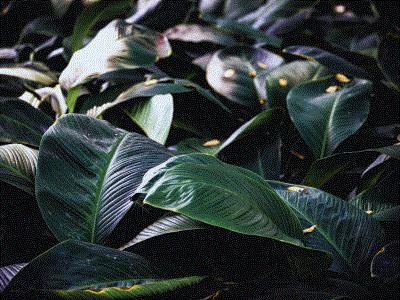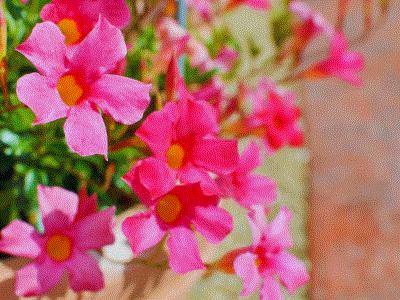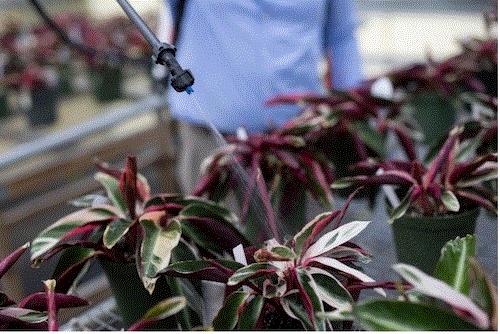Rethinking Plant Categorization
Suzanne Kilgore, Product and Program Development Manager for ForemostCo, was intrigued by something I mentioned here a few months back and wrote the following as a response. Specifically, the original comment was about The Garden Center Group’s recategorization of some outdoor tropical plants as annuals “so as to leave indoor tropicals (houseplants) more isolated” in their reporting information.
Here is what Suzanne had to say:
For decades, the horticulture industry has excelled at tracking and classifying bedding plants, annuals and perennials that dominate garden centers each spring. Yet, despite their cultural and economic importance, foliage and tropical plants have historically fallen through the cracks when it comes to accurate sales data and categorization. The rise of tropical houseplants as a mainstream category is a relatively recent phenomenon and understanding how we got here helps explain both the challenges and opportunities the industry faces today.
A Late Arrival: Houseplants Enter the Data Conversation
For much of the 20th century, industry statistics focused heavily on outdoor annuals like petunias and impatiens, or perennials like hostas and daylilies. For many years their sales numbers have been well quantified, tied directly to seasonal garden sales. Foliage, by contrast, was a niche market, popular among interior landscapers and specialty retailers but largely untracked by national reporting systems.

It wasn’t until the late 1970s that tropical houseplants began to gain real visibility in mainstream retail. The expansion of big box stores such as Kmart, Sears and later, Home Depot and Walmart, changed everything. These mass merchants began dedicating shelf space to indoor greenery, offering consumers an entirely new way to experience plants. Suddenly, houseplants were no longer limited to florist shops or local greenhouses—they were available everywhere, often at prices accessible to the average household.
This retail revolution helped create a nationwide appetite for indoor foliage, but industry data collection never fully caught up. Even today, tracking systems like USDA crop reports or market analyses often lump foliage into broad “nursery” categories, masking the real scale of the indoor tropical and foliage market.
The Problem with “Annuals” and “Perennials”
Part of the confusion stems from the very language we use to classify plants. The terms annual and perennial have long served as shorthand for consumer behavior; plants you replant every year versus those that return season after season. But these definitions are not universal. A plant that behaves as an annual in Minnesota might be perennial in Florida. Hibiscus, Mandevilla and Bougainvillea, for instance, thrive outdoors year-round in the South yet are treated as summer color or patio plants farther north.
This geographic fluidity makes the traditional annual/perennial divide increasingly inadequate in a globalized, climate-aware marketplace. Many growers, distributors and retailers now see the need for clearer, trackable categories that better reflect both usage and growing conditions.

Toward a More Accurate Classification System
Continued from above.
A logical next step would be to formally separate indoor tropicals from outdoor tropicals—two groups that currently share overlapping but distinct markets.
Indoor tropicals (foliage/houseplants) would include the wide range of species suited to interior environments: philodendrons, pothos, calatheas, ficus and countless others.
Outdoor tropicals would include heat-loving, sun-hungry species such as Hibiscus, Mandevilla and Bougainvillea—plants that deliver seasonal color in temperate zones but behave as perennials in tropical climates.

Such a framework would allow more accurate reporting, benchmarking and forecasting across the supply chain. For growers and distributors, it would clarify production cycles and marketing strategies; for retailers, it would help align assortments with consumer expectations.
New Generations, New Growth
While classification challenges remain, demand for tropicals, foliage and houseplants has exploded in recent years, driven in large part by Millennial and Gen Z consumers. Social media platforms such as Instagram and TikTok have turned plant ownership into a lifestyle, celebrating “plant parenthood” as a form of self-expression and wellness. This cultural shift has transformed foliage from a background décor element into a personal statement piece.
Then came COVID-19. During the pandemic lockdowns, millions of people confined to their homes turned to plants for comfort, beauty and connection to nature. Nurseries and foliage suppliers saw unprecedented spikes in demand, with some categories doubling or tripling in sales almost overnight. What began as a coping mechanism evolved into a lasting trend, as consumers discovered the joy and challenge of nurturing living décor.
Looking Ahead
As the industry continues to evolve, it’s time for a renewed conversation about how plants are categorized and tracked. Accurate, standardized reporting for indoor and outdoor tropicals would not only clarify market performance but also help growers and retailers plan more efficiently.
The world of plants has always been fluid—growing, adapting, crossing borders and climates. Our data systems need to do the same. By modernizing how we define and measure these categories, the horticultural industry can better reflect the vibrant diversity of today’s plant marketplace—and ensure that the next generation of “plant parents” keeps the green momentum growing.
Thanks for sharing this, Suzanne!
Thoughts? Comments? Your own take on the plant categorization issue and where houseplants and tropicals fit in? Tell me about it and I can include it here. Drop me a note HERE. If you are ever stirred to write something as a response to any topic I mention in Tropical Topics, feel free to do so and I’ll more than likely include it. We can all learn from each other here.

New Leaf Shine Product
Need to shine those leaves on your indoor and outdoor tropicals and foliage plants? There’s a new product from FloraLife (a division of Smithers-Oasis) that’ll do the trick. Whether you’re a grower, retailer, interiorscaper or event planner (yes, they need to shine leaves, too!), FloraLife’s Liquid LeafShine provides a ready-to-use, non-aerosol formulation that gives you a natural shine on foliage.

The innovative fine-mist sprayer evenly distributes a water-based formula onto the leaf surface that results in a streak-free finish. No oily leaves. Nothing that attracts dust. Liquid LeafShine helps foliage stay cleaner longer by both removing and preventing water spots and calcium deposits. No mixing or diluting, just shake and spray.
Other key benefits include:
-
Refillable packaging.
-
Fast-drying application with no wiping required.
-
Aerosol-like fine-mist sprayer.
Said Jim Daly, President, Global FloraLife & Grower Operations and Chief Research Officer, of the company’s new product, “With the FloraLife Liquid LeafShine Spray, customers can achieve a natural, professional-quality shine while benefiting from a more sustainable option. Our new spray is designed to be easy to use, quick drying and refillable, helping florists, event planners and retailers deliver exceptional results while reducing waste.”
It comes in 16 oz. bottles and 1-gal. jugs for refill. Interested in getting yourself some? Contact your local rep or visit the FloraLife website.

Two Upcoming Online UF Courses
For those of you growing those shiny-leaved tropicals and houseplants (and any other crops, actually) the University of Florida’s Greenhouse Training has two online courses for you, and both start on November 10.
The intermediate-level Practical Disease Management course will help you prevent diseases by learning how diseases develop and spread. You’ll also get a basic understanding of organic and conventional management and learn to safely apply and handle fungicides. The course is taught by Dr. Carrie Harmon, Director of the UF/IFAS Plant Diagnostic Center in Gainesville, Florida, who has been described by previous students in this class as “clear, concise and informative” and as someone who “provides the logic about how to choose disease treatments and the steps to achieve it.” High praise, indeed! This course is part of the Plant Health Professional Certificate.

The second course is the advanced Climate Management. Its team of instructors will help you select and operate climate control equipment and sensors to create the ideal crop growth climate. And it’s taught by a super group of instructors: Paul Fisher of University of Florida, Erik Runkle and Roberto Lopez of Michigan State University, Jim Faust from Clemson, John Erwin of University of Maryland, Jennifer Boldt and Kale Harbick of USDA-ARS, Charlie Hall from Texas A&M and experts from Argus, Priva and Wadsworth. Take this course while it’s offered now—they don’t offer it every year, I imagine because it’s hard to get a group of instructors like this together.

These two courses run from November 10-December 12 and are taught in both English and Spanish. All materials are completely online and available any time of day, and include pre-recorded videos, an interactive discussion board and quizzes. Two new modules for the courses are available each week through four weeks for a total of eight sessions.
To learn more about costs and commitment, click HERE. Oh, and I should mention there is a 20% discount when you register a team of five or more. Worth it!
If you have any comments, questions or suggestions for content, email me about them at ewells@ballpublishing.com.

Ellen Wells
Senior Editor
Green Profit
This edition of Tropical Topics was sent to 28,941 loyal readers!
If you're interested in advertising on Tropical Topics, contact Kim Brown ASAP!